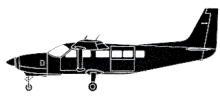Incident Overview

Description
The Douglas C-47 owned by the SAA Historic Flight flew to Lanseria (HLA) to carry out a sightseeing flight. Fuel allocated in the aircraft for the flight was 400 US gallons (1514 liters). The aircraft departed Swartkop Aerodrome at 14:10 UTC on a ferry flight to Lanseria from where the sightseeing flight took place. A supernumerary pilot, about to undergo conversion training, was the only other person on board. The purpose of his presence was to observe procedures, flying and handling of the aircraft during the ferry flight. The flight departed Lanseria at approximately 14:55 UTC with 24 passengers on board and landed back at 15:55 UTC. At 16:10 UTC, after the passengers had disembarked, Flight 668 took off from runway 24 at Lanseria for the return flight to Swartkop. At about 6000 ft Above Mean Sea Level (AMSL) and about 1500 ft Above Ground Level (AGL) to the South of and downwind of runway 24R, the left engine failed. The first officer was the pilot flying and the captain was the pilot non-flying. The captain switched the left engine booster pump on and changed the left-hand side fuel tank selection from the left main to left auxiliary tank and the left engine recovered. Shortly thereafter the right engine also failed. The first officer commenced a turn towards runway 24 whilst the captain dealt with the problem of now restarting the starboard engine by switching the right engine booster pump on and selecting the right-hand side fuel tank selector from the right main tank to the right auxiliary tank and the left engine recovered. According to the crew the left engine then failed again and so too did the right engine. At this stage the crew saw that they were not going to reach runway 24 and carried out a wheels-up forced landing on an open field. During the process of going into the forced landing on the field the captain continued with his attempts to restart the engines by going through the selection of the different fuel tanks. After the aircraft came to a standstill the crew and the supernumerary pilot evacuated the aircraft. PROBABLE CAUSE: “1. The engines failed due to fuel starvation. 2. Contributory to the fuel starvation was the incorrect selection of fuel tanks and also because the crew did not know which tanks had the most fuel.”
Primary Cause
Incorrect fuel tank selection and lack of knowledge regarding fuel tank allocation led to the engine failures. The crew’s failure to correctly identify and select fuel tanks resulted in the incorrect fuel distribution, triggering the engine failures.Incorrect fuel tank selection and lack of knowledge regarding fuel tank allocation led to the engine failures. The crew’s failure to correctly identify and select fuel tanks resulted in the incorrect fuel distribution, triggering the engine failures.Share on:





